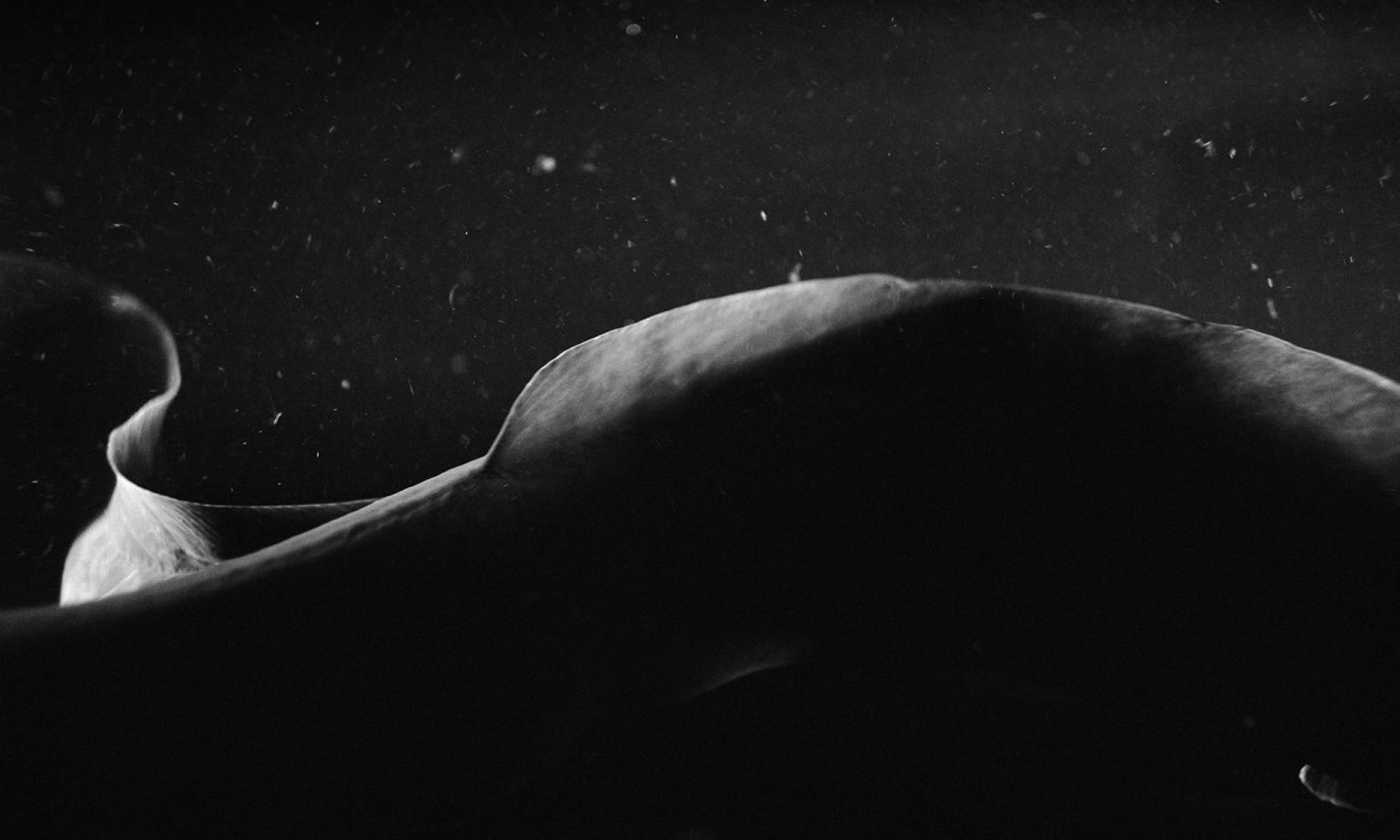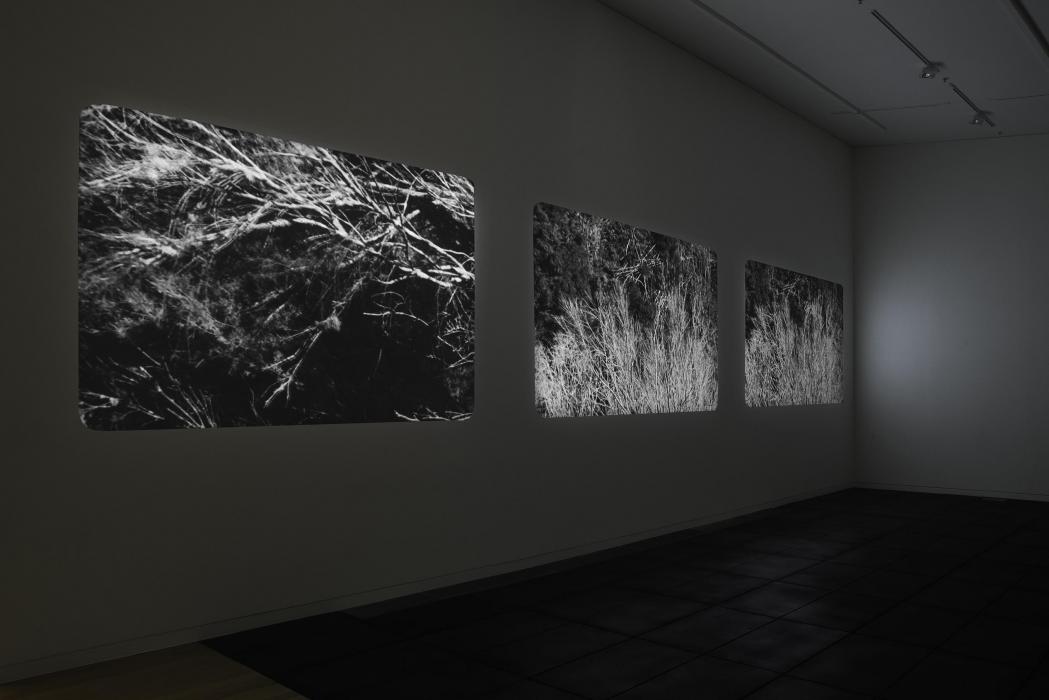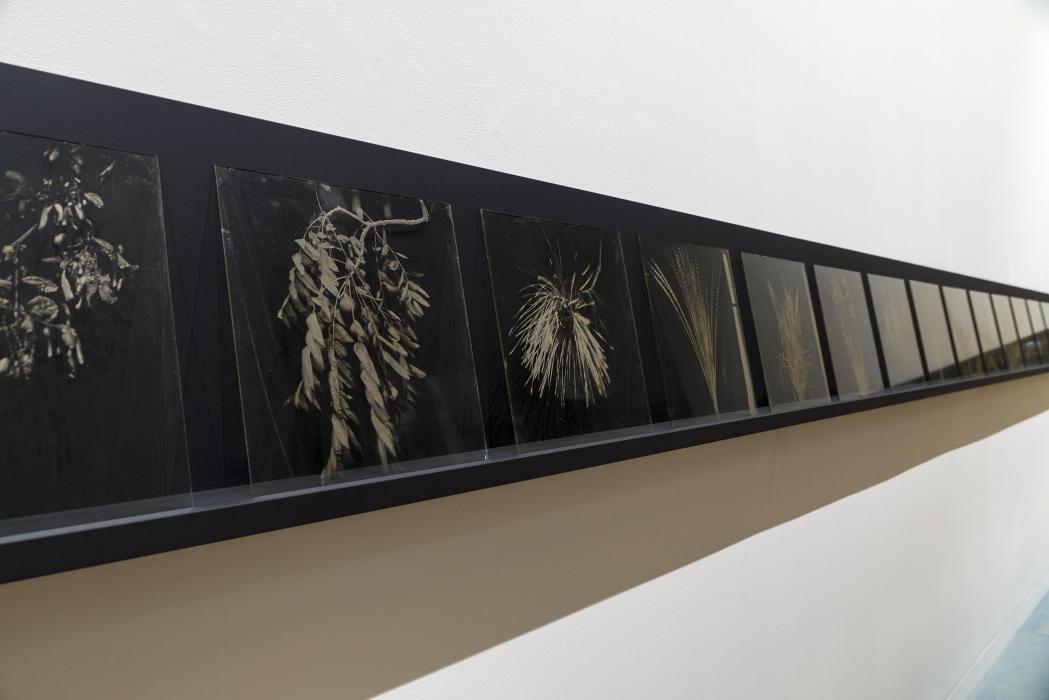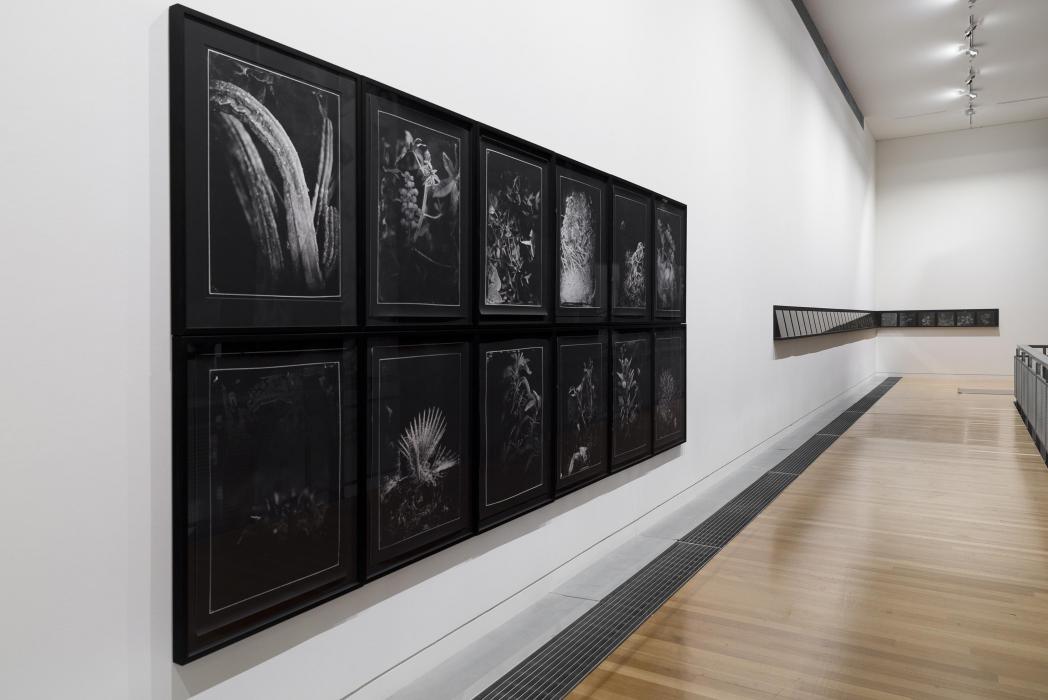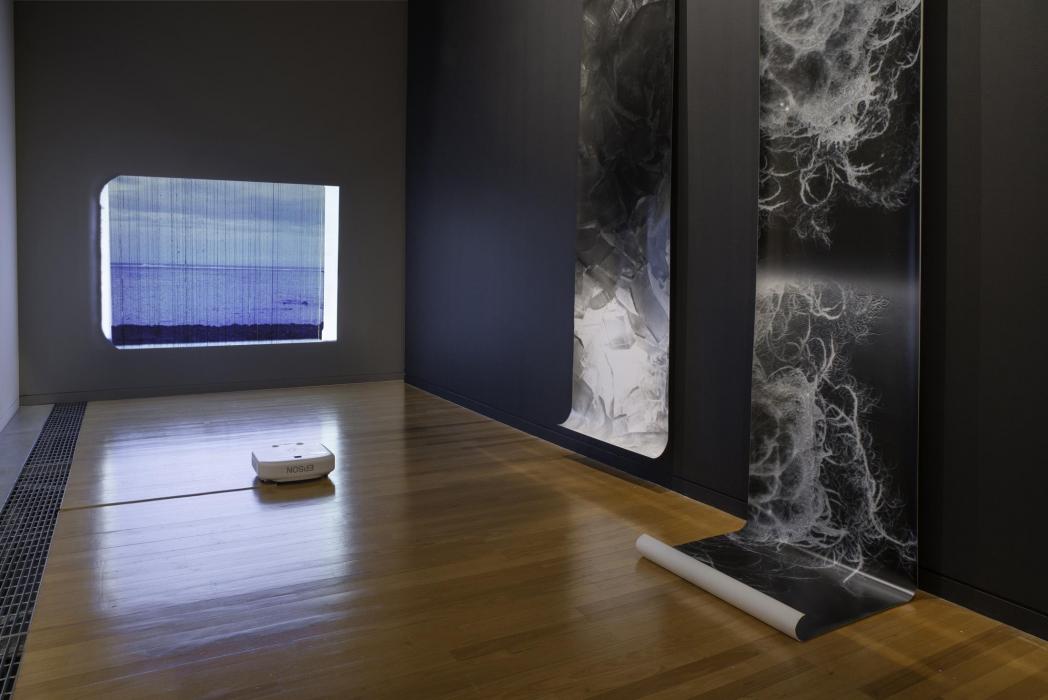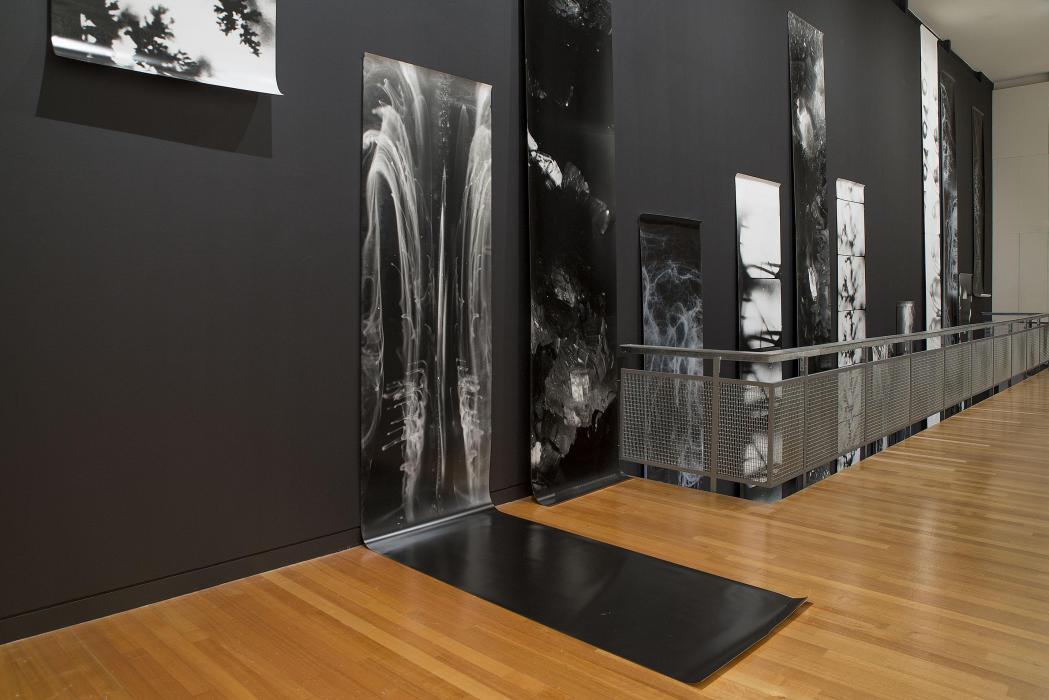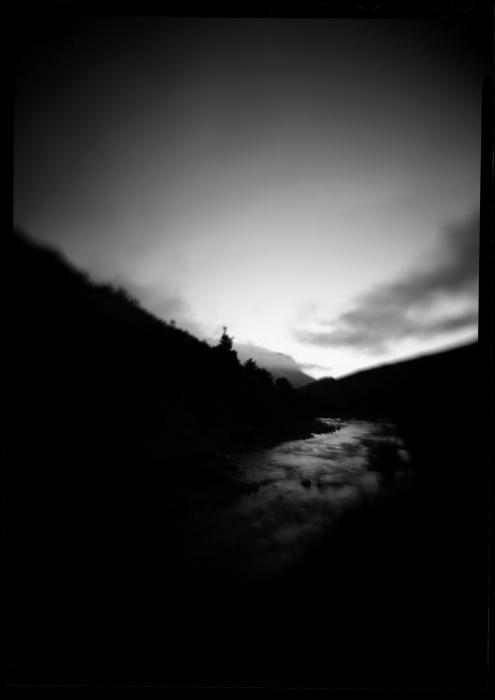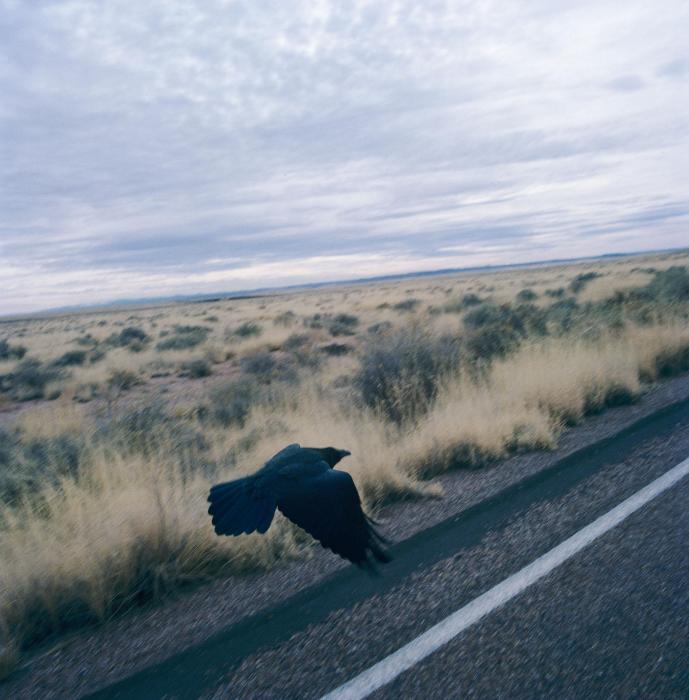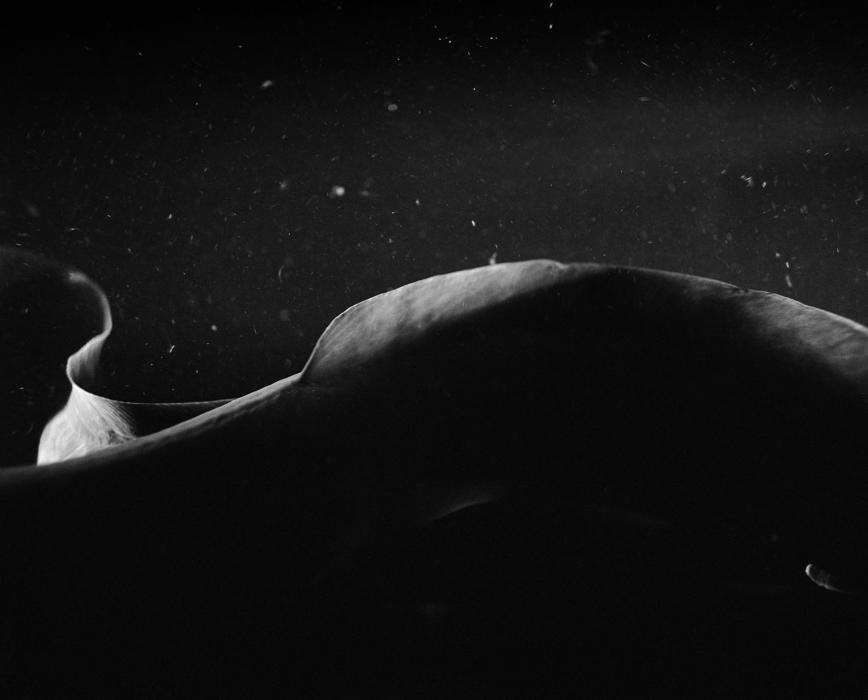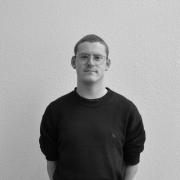On the Last Afternoon: Disrupted Ecologies and the Work of Joyce Campbell
Robert Aldrich’s Kiss Me Deadly (1955) is possibly the best thing to emerge from the dominance of film noir in American post-war cinema. It has all the essential elements of the noir archetype: the hard-boiled detective, the femme fatale, the anxious, shadowy labyrinths of urban Los Angeles, the chase against a sinister organisation with malevolent yet indeterminate motives to find a briefcase with contents of paramount yet indeterminate importance. But at its climax, the film diverges from the stereotypes in a rupture so violent it becomes difficult to conclude that it’s really film noir at all. Kiss Me Deadly ends at the beach, waves gently washing onto the Pacific shore, as the lights of nuclear annihilation usher in the first minutes of the end of the world.
It’s not the purpose of this text to get romantic about cinema history. It is, in name, to review On the Last Afternoon: Disrupted Ecologies and the Work of Joyce Campbell. The exhibition could be called a mid-career survey, but to do so would be a disservice to the care and intelligence with which curator John C. Welchman has tended to the New Zealand photographer’s career across the winding, narrow galleries of Wellington’s Adam Art Gallery Te Pātaka Toi. Additionally, On the Last Afternoon is paired with Te Taniwha: The Manuscript of Ārikirangi in the Adam’s Kirk gallery. This exhibition, that both maps onto and departs from On the Last Afternoon, presents Campbell’s ongoing collaboration with Ngāi Kōhatu kaumatua, Richard Niania. The centrepiece of this collaboration is the presentation of a manuscript written by Te Kooti Ārikirangi Te Turuki, the nineteenth-century Rongowhakaata prophet and founder of the Ringatū faith. As a Pākehā writer, it’s not possible for me to critically treat the stories and histories in Te Taniwha with the layered complexity they deserve, especially within this limited format. But rather than an incomplete assessment of the totality of Campbell’s works at the Adam, a partial or fragmentary approach opens up potential analyses for the individual currents that flow through the exhibition. And this lets me return to Kiss Me Deadly. A subtle aspect of On the Last Afternoon, one that offers a critical lens on the sensation of experiencing the exhibition, is how it operates within the form and logic of film noir. And, like Aldrich’s film, On the Last Afternoon ends on a beach, at the end of the world.
The narratives of films noir are convoluted in the interests of form and structure, not necessarily of content. With myriad twists and turns that become increasingly hard to follow, their plots act as a means to induce the same sensations of individual anxiety in the audience that their protagonists experience on screen. Images contradict each other, spaces contract and obscure, surfaces offer abstracted, illegible reflections. We know there is a connection but can’t quite piece together the evidence and, failing to form the full picture, we stumble deeper into a labyrinth populated by ambuscades and monsters. The experience of walking through On the Last Afternoon, encouraged by the idiosyncratic architecture of the Adam, replicates this formal technique.
The first image of the exhibition immediately establishes the tone of contradiction and disjunction. Ghost Scrub (2018), an enormous three-channel video work, projects a graveyard of bone-white kānuka and mānuka trees though a frenetic array of fast-moving cuts. These trees, select victims of herbicide spraying in the Ruakituri Valley, are contrasted with the sounds of an avian chorus, recorded at a private bird reserve. The disconnect is straightforward enough: images of the apocalyptic what is that stand at odds with sound of the missing what might have been. But the confronting scale of the work, the dizzying passage of images that refuse to align with their aural counterparts, immediately announce—in true noir form—that we have entered a space of porous boundaries, where expectation and representation are adjacent but rarely aligned.
The remainder of the upper gallery is occupied by two series, both produced in Los Angeles, that focus on urban flora. Crown Coach Botanical (2008) is a pictorial survey of plants growing in the site of the former Crown Coach Industrial Site. LA Botanical (2006-07) is Campbell’s attempt to depict every plant in the Los Angeles Basin for which there is a recorded use. Both series were captured using wet-plate collodion on glass negatives, a nineteenth-century technique that requires an on-site darkroom and carefully managed chemistry. At the Adam, the former series is presented as a grid of twelve gelatin silver prints, while the latter appears as a row of wet-plate ambrotypes. It might seem esoteric to emphasise the technical production of these images, but it is in process and presentation that they gain their power.
The twelve photographs from Crown Coach Botanical are undoubtedly beautiful and well produced prints, but they pale next to the depth and intrigue of the ambrotypes they’re paired with. The ambrotype is an antiquated method of photographic sleight-of-hand, popular from the 1850s-90s, where placing a glass negative against a dark background creates the appearance of a positive image. Traditionally encased inside a metal frame, Campbell has instead leaned her fragile negatives against a darkened shelf, in a move that immediately upsets the stability of the images. At this tilt, the botanical content of each photograph can be seen in both negative and positive as the viewer moves through the space, and in each our reflection is almost as present as the flora. Again, this creates disjunction and confusion, but now matched by anxieties—for the fragility of these objects and of the forms (both their ostensible subjects and our own reflections) held within.
Descending into the lower galleries, Campbell and Welchman walk the viewer through moonlit rivers, shimmering daguerreotypes of Antarctic bluffs, and enlarged bacterial portraits. Connecting the upper and lower galleries are the monolithic, descending scrolls of As It Falls (2018-19). These multiple-exposure gelatin prints slice through the three levels of the gallery. Never viewable in its entirety, the work nonetheless appears in partial form throughout the journey through the exhibition, each time revealing a different portion of itself but never quite giving up the full picture. The contents of the prints include close images of quartz and root systems, bacterial forms and colloidal shapes in water. As a guide through the exhibition, As It Falls collates elements of Campbell’s disparate bodies of work, but the links are tangential, mimicking the form of the work in its insistence on revealing only partial truths.
The final image of On the Last Afternoon is, as promised, of the beach. The Reef (2018), a 16mm film transferred onto digital video, is a single shot of waves breaking on a coral reef in Fiji. Accompanied by a soundtrack of consistent, rhythmic waves, the image is oddly stable, free of the jarring contradictions of much of the exhibition. However—again in noir style—this is the calm at the centre of the maze, the eye of the storm. Campbell adjusted the scanner to degrade the film with sand and grit as it passed through. As a result, by the end of the film the reef is barely visible against a pale shroud. In Kiss Me Deadly, the apocalypse came with the white-hot light of nuclear fire. Here it is slower, more patient, but just as irreversible. Reefs like this are dying under the threat of increasing violent weather systems and ocean acidification, turning bone-white like the sprayed trees of Ghost Shrub. Standing in front of The Reef, the shifting and distorted images of On the Last Afternoon finally align with single-minded clarity. Total ecological collapse is too monstrous, too enormous to ever see in full. Instead, it solders the disparate presentations of Campbell’s exhibition together as fragments that form a terrible whole. Fragile subjects take fragile form, and then they disappear.

